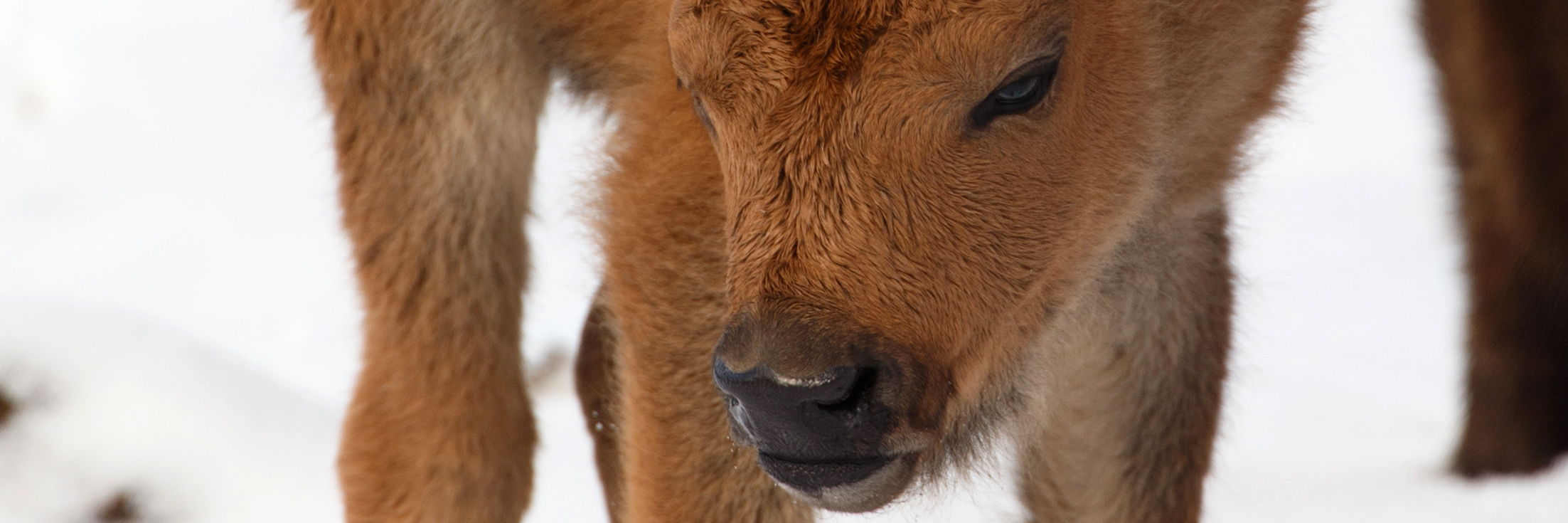
Banff bison 101
Banff National Park
New Informed by Indigenous, stakeholder and public review and input, Parks Canada is pleased to present the final Report on the Plains Bison Reintroduction Pilot 2017-2022. The Report follows the direction of the 2015 Plains Bison Reintroduction Plan, summarizes key learnings, and provides a basis to understand the feasibility of managing bison on the landscape.
Over a 30-day engagement period, from November 9, 2022 – December 14, 2022, the Agency sought perspectives from Canadians on the future of bison management in Banff National Park. Indigenous groups, stakeholders, and the public were encouraged to review the Draft Report and share their feedback.
The engagement process has now concluded. The final report is now available to the public, along with a ‘What We Heard’ summary of the recent engagement. Parks Canada is pleased to announce that, moving forward, Banff will work towards keeping bison on the landscape within Banff National Park while the Agency explores future options for bison management through the development of a bison management plan. Indigenous peoples and stakeholders will continue to be informed and involved throughout this process.
Final Report on the Plains Bison Reintroduction Pilot 2017-2022
What does it mean to have bison back in Canada’s first national park after they were missing from the wild for over a century?
The arrival of 16 bison to the Panther Valley is an exciting conservation success-in-the-making for Banff and a new chapter in Parks Canada’s ongoing bison restoration story.
Archeological history
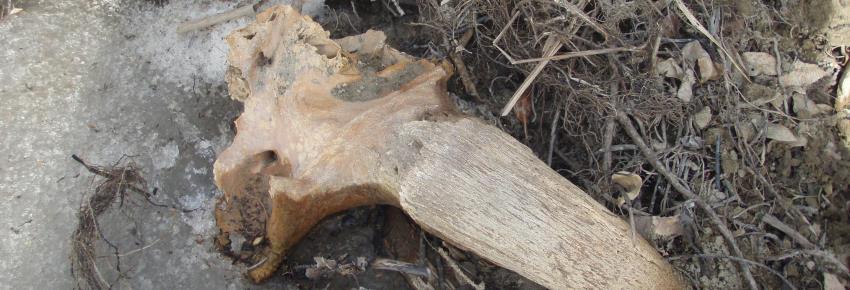
This bison skull found near the town of Banff is over 6,000 years old!
For thousands of years, bison roamed the valleys of what is now Banff National Park. They disappeared from this area around 140 years ago, but they left behind clues of their presence that we still find today.
Traditional knowledge, explorer accounts and archeological evidence tell us that bison travelled through this area.
Bison didn’t gather in the vast herds that were common on the plains, but even in low numbers, they helped shape the ecosystems that we enjoy today.
Ecological engineers
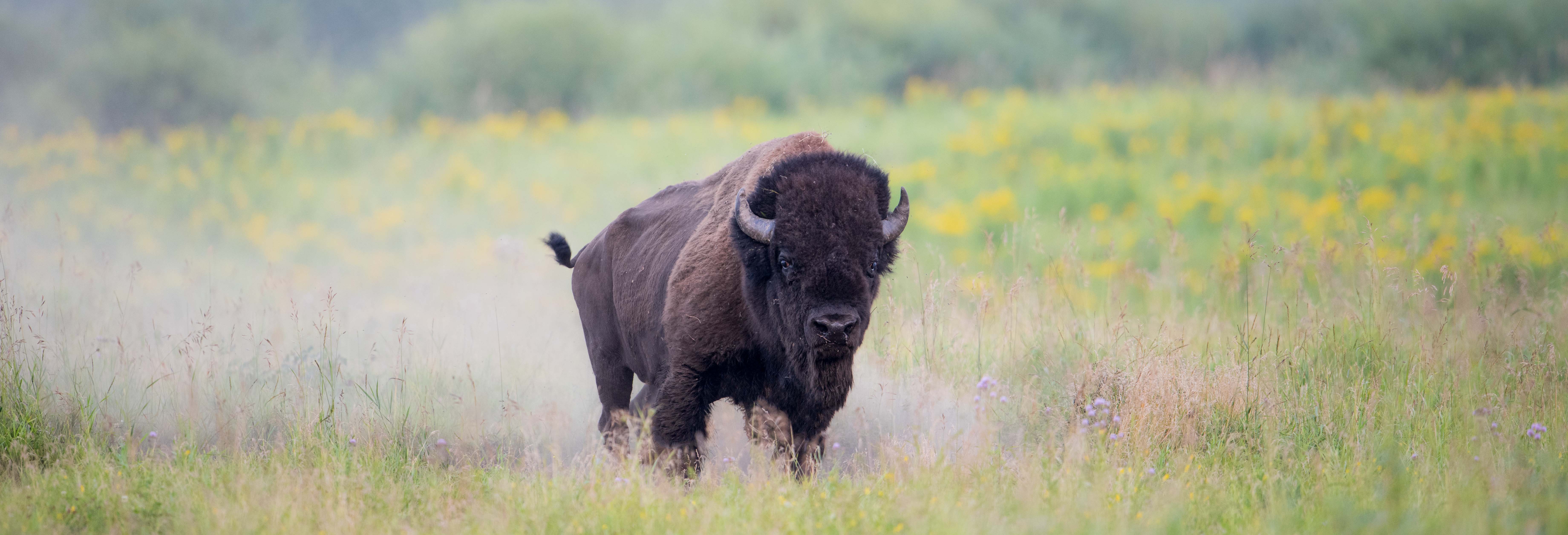
A bison lifts its head from the grass. Spring has arrived – bringing fresh shoots. It lets out a snort and then rolls on the ground to scratch an itch, leaving behind a tuft of warm winter fur.An endangered Olive-sided flycatcher swoops over the small herd and spots the fur blowing in the wind. Perfect to keep its chicks cozy in its new nest.
Bison are ecosystem engineers. They shape the landscape in ways that help many other plants and animals, ranging from bugs to birds to bears. Shedding their winter fur that is used by birds to line their nests is one example of the many ways bison impact the ecosystem.
Other examples of bison as ecosystem engineers include:
- Grazing and wallowing creates habitat for a range of animals including elk, ground squirrels and badgers.
- As North America’s largest land mammal, bison provide a rich source of nutrients for scavengers, bears and wolves.
Cultural importance
Bison are also vital to the history and culture of many indigenous peoples.
For thousands of years, many indigenous nations traveled through what is now Banff National Park, hunting bison and burning forests and meadows to improve habitat quality for bison and other animals.
For indigenous peoples, bison traditionally provided a range of life-sustaining resources including:
- food – especially in the form of pemmican;
- hides for tipi walls;
- bones and sinew for tools and
- leather for clothing such as moccasins.
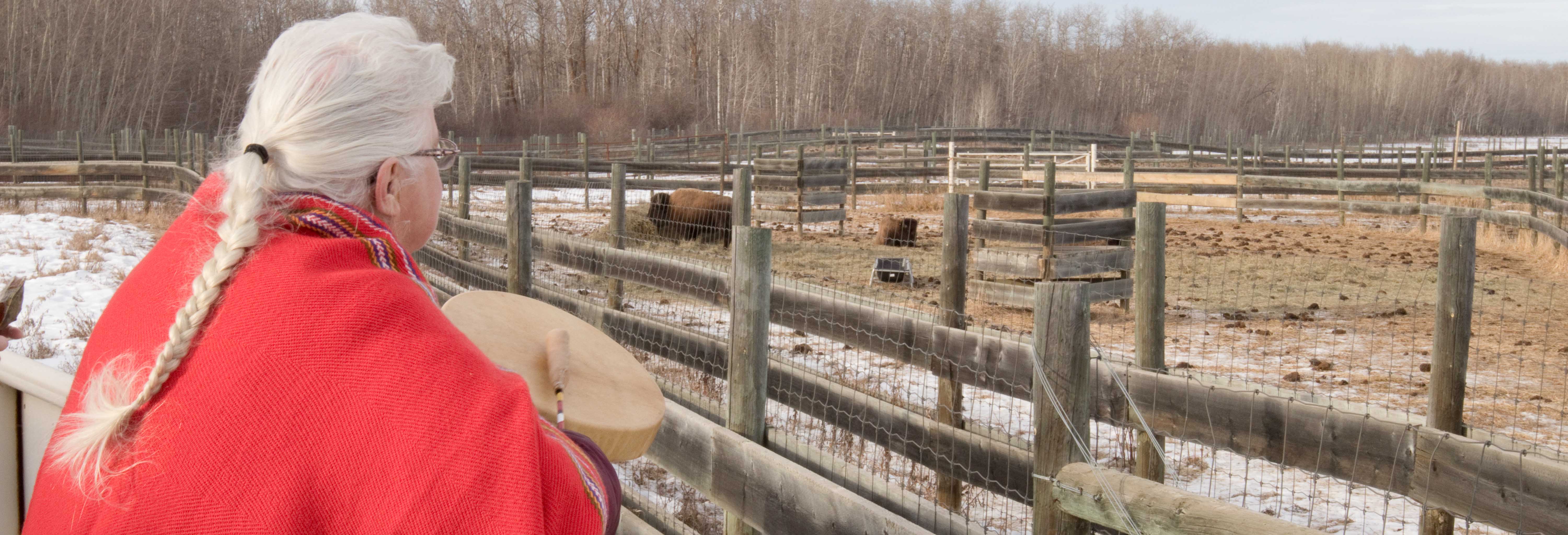
In January 2017, Parks Canada hosted a blessing ceremony at Elk Island National Park indigenous nations in Treaty 6 and 7 and the Metis of Alberta to give bison a proper spiritual send-off before their journey to Banff.
To honour the connection between indigenous cultures and bison, Parks Canada is committed to welcoming indigenous peoples to reconnect with bison. This may include sharing traditional knowledge, participating in ceremonies or getting involved in on-the-ground activities.
Disappearance
The plains of North America were once rich with the sounds of snorts, rumbles and pounding hoofsteps of vast herds of bison.
Their herds once numbered as big as 30 million, but bison nearly became extinct within a single human lifetime. Many factors led to their near-disappearance, but over-hunting was the main cause that left less than 1,000 surviving bison.
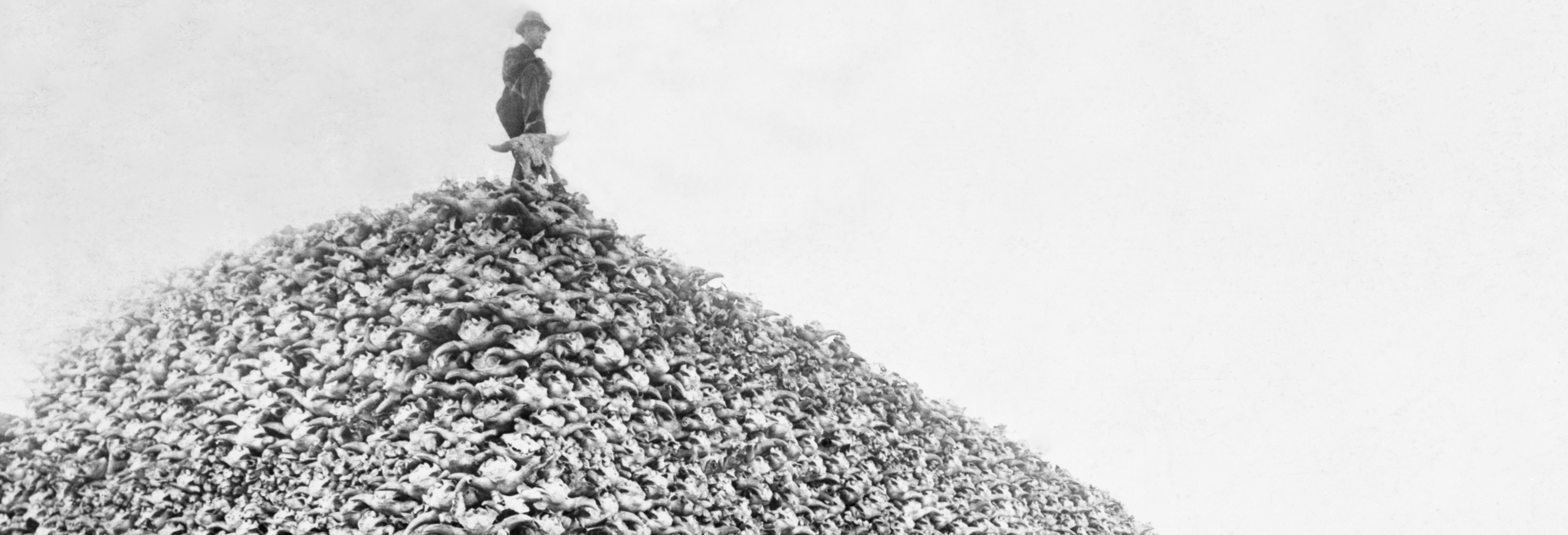
By the 1850s, bison had also vanished from the Banff area – leaving a hole in both the ecosystem and in the human communities that depended on them.
Luckily, bison were given a second chance – thanks in large part to the leadership of Parks Canada.
Conservation legacy
For over a century, Parks Canada has been an international leader in bison conservation – helping bring bison back from the brink of extinction.
In the early 1900s, 700 plains bison from the last wild herds were bought by the Government of Canada from a rancher in Montana. The bison were shipped north to Elk Island and Buffalo national parks.
Buffalo National Park (near Wainwright, Alberta) closed thirty years later due to disease, overgrazing, and lack of funding, but the bison in Elk Island National Park thrived. They are now the primary seed stock for reintroduction projects around the world, including Montana, Russia, Alaska, and Grasslands National Park.
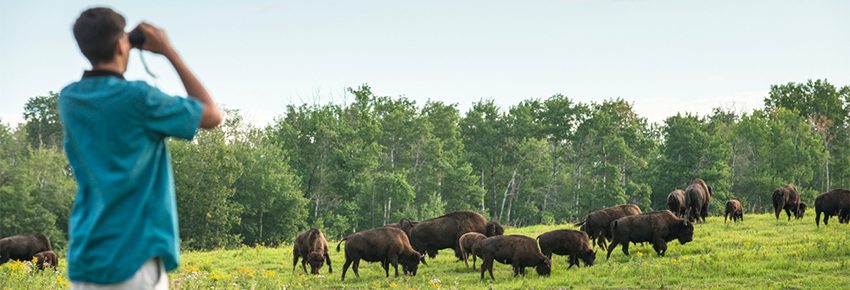
Parks Canada also manages wild, free-roaming bison in Prince Albert National Park and Wood Buffalo National Park and protects several display herds across the country.
The paddock
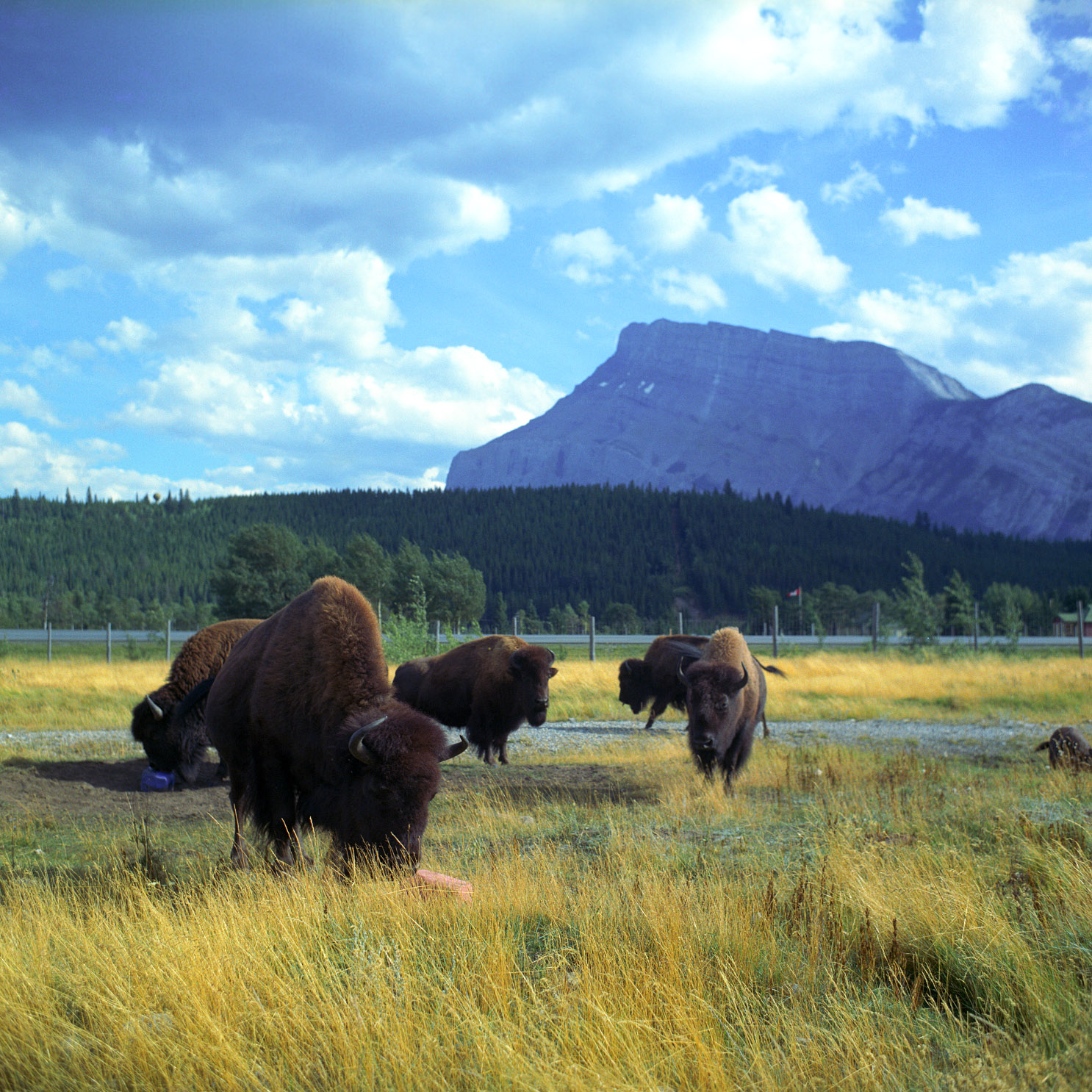
Do you remember visiting Banff National Park and taking a drive through the bison paddock? Windows down, you smelled an earthy scent in the air when bison wallowed in the dust. If you listened carefully, you could heard their grunts as they grazed under the aspen trees.
Bison conservation in Canada started here in Banff in 1897 when a handful of the few remaining wild bison left in North America protected as a display herd in the bison paddock.
The paddock was an attraction for visitors to the park and now a fond memory for many who had a chance to experience it.
The enclosure and the bison were removed in 1997 to reconnect the flow of wildlife movement around the Town of Banff.
Once the bison were gone, a conversation started to bring bison back to Banff…but this time as wild animals rather than as a display herd in a fenced paddock.
New beginnings
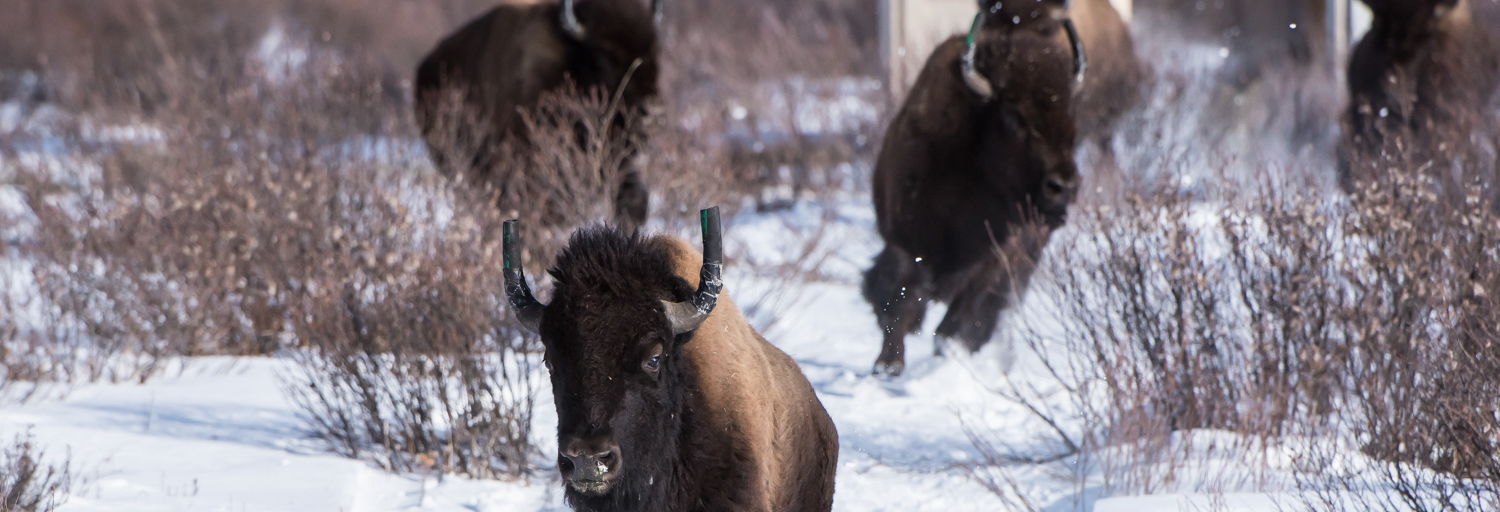
The reintroduction began with a small herd of bison being released in a holding pen on the eastern slopes of Banff National Park. The second phase occurred 18 months later, when that same herd and its newly born calves were released into the remote 1200km2 reintroduction zone in the backcountry of the park.
The 5-year pilot has now concluded. The original 16 translocated animals have adapted quickly to Banff’s mountain environment and remained healthy, growing to close to 100 animals. Informed by Indigenous, stakeholder and public review and input, Parks Canada is pleased to present the final Report on the Plains Bison Reintroduction Pilot 2017-2022.The Report follows the direction of the 2015 Plains Bison Reintroduction Plan and summarizes key learnings.
The final report is now available to the public, along with a ‘What We Heard’ summary of engagement with Indigenous groups, the public and key stakeholders. Parks Canada is pleased to announce that, moving forward, Banff will work towards keeping bison on the landscape within Banff National Park while the Agency explores future options for bison management through the development of a bison management plan. Indigenous peoples and stakeholders will continue to be informed and involved throughout this process.
Bison home | Bison 101 | Bison Blog | Multimedia Gallery | FAQS | Contact Us
Related links
- Date modified :